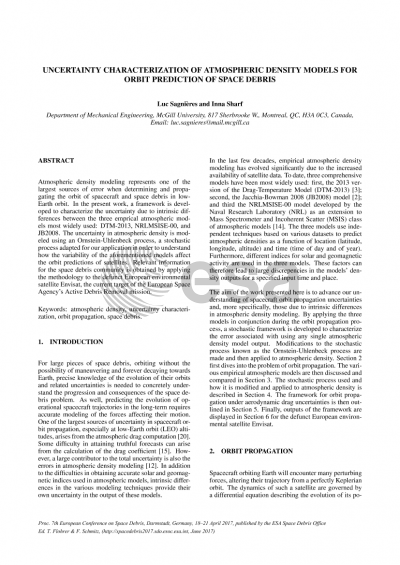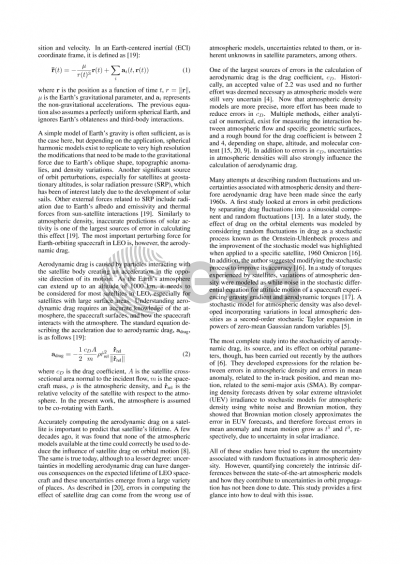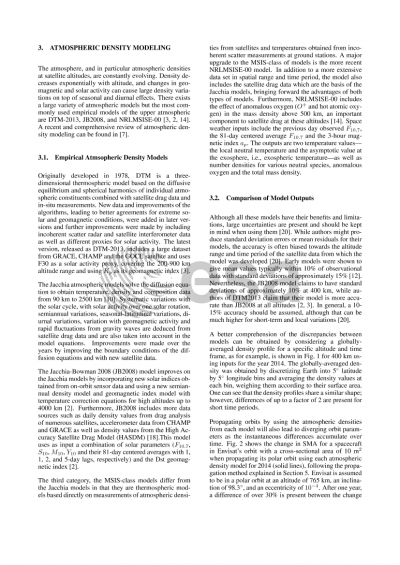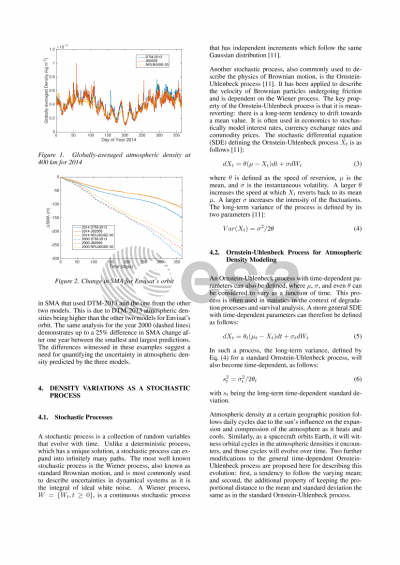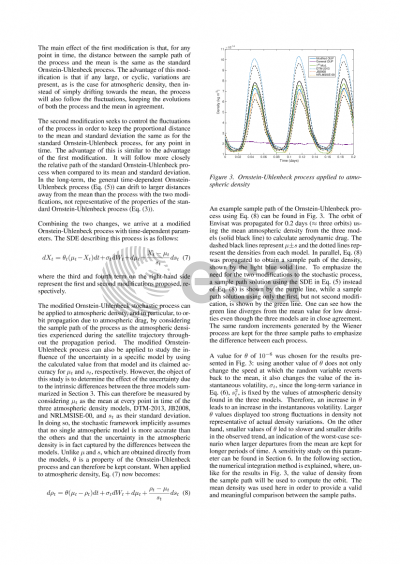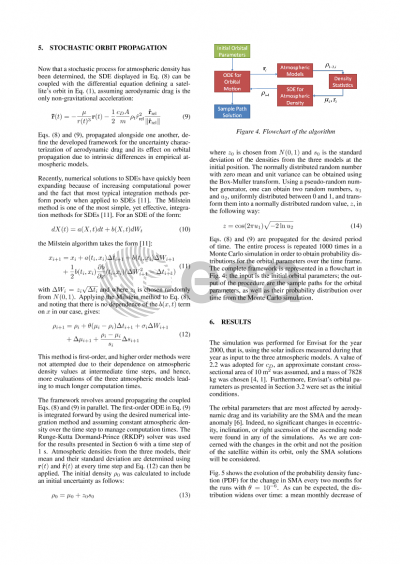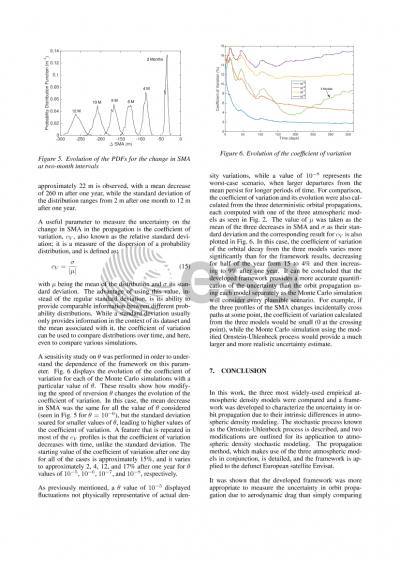Document details

Abstract
For large pieces of space debris, orbiting without the possibility of maneuvering and forever decaying towards Earth, precise knowledge of the evolution of their orbits and related uncertainties is needed to concretely understand the progression and consequences of the space debris problem. Predicting the evolution of spacecraft trajectories in the long-term requires accurate modeling of the forces affecting Earth satellites. One of the largest sources of uncertainty in spacecraft orbit propagation, especially at low-earth orbit (LEO) altitudes, arises from the atmospheric drag computation. Moreover, understanding atmospheric drag requires accurate knowledge of the atmosphere and gas-surface interactions. Some difficulty in attaining truthful forecasts can therefore come from lack of information in the calculation of the drag coefficient. However a large contributor to the total uncertainty is also the result of errors in atmospheric density modeling. In addition to the difficulties in obtaining accurate long-term predictions of solar and geomagnetic activity and their indices used in the atmospheric models, intrinsic differences in the various available state-of-the-art modeling techniques provide their own uncertainty in the output of these models.
In the last few decades, empirical atmospheric density modeling has evolved significantly due to the increased availability of satellite data. To date, three comprehensive models have been the most widely used: first, the NRLMSISE-00 model developed by the Naval Research Laboratory (NRL) as an extension to Mass Spectrometer and Incoherent Scatter (MSIS) class of atmospheric models; second, the Jacchia-Bowman 2008 (JB2008) model; and third the 2013 version of the Drag-Temperature Model (DTM-2013). All three models use independent techniques to predict atmospheric densities as a function of location (latitude, longitude, altitude) and time (time of day and of year), while using some of the same satellite data. Furthermore, different indices for solar and geomagnetic activity are used in the three models. These factors can lead to large inconsistencies in the models’ density outputs for a specified input time and place.
The aim of the work presented here is to advance our understanding of spacecraft orbit propagation uncertainties and, more specifically, those due to intrinsic differences in atmospheric density modeling. By applying the three models in conjunction during the propagation process, a framework is developed to characterize the error associated with using atmospheric density model outputs. The outputs from the three atmospheric models are animated, and compared over specified time periods. In order to obtain relevant information for the space debris community, the framework is applied to different space debris objects, including the defunct European environmental satellite Envisat, the current target of the European Space Agency’s Active Debris Removal mission.
Preview
